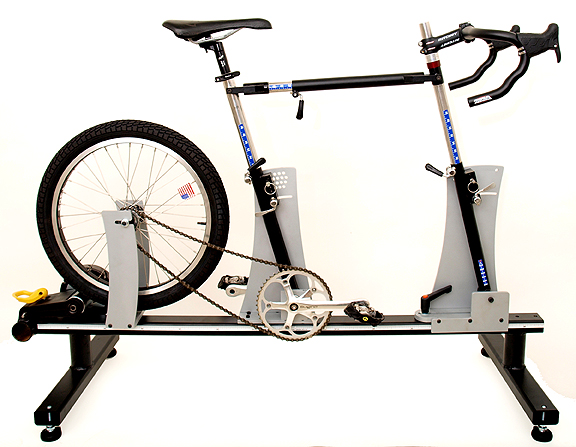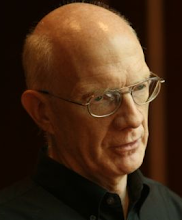I was in Europe on business this past week, Sunday through Friday, and spent my time in Basel and Berlin, which are both serious cycling cities. There were crowds of cyclists out, as the weather was mild. Pictures are worth thousands of words, and I'm suffering from mild jet-lag, so I'll just post some pictures and make a few comments. I describe this kind of post as "Euro-envy".
I know I've got a worldwide readership, and those of you who live in "real" cycling cities in Europe and elsewhere may well find this to be just boring tourist shots (and not great photography at that,) and for this I apologize in advance (although there may be one or two pieces of hardware below that are interesting). But this is mainly for those of us in America for whom bicycle culture is still on the outside looking in.
Arrived in Zurich on Sunday AM and took the train to Basel, where I had a day of meetings on Monday. Basel is a beautiful city situated on a bend in the Rhine, nestled in that corner of Switzerland that is right at both the French and German borders. Basel is a quite hilly place, with its share of rough cobblestone paving, and although they have bike-rental right at the Bahnhof, the profusion of streetcar tracks and the difficult navigation of the city's medieval planning kept me at pedestrian status. There is some bike infrastructure in Basel, but really it's just the social contract—well-educated motorists who are aware of the cyclists—that makes things work.

My first image tells quite a story by itself. Family of five. Mom hauling a trailer with kid #3, kids #1 and #2 on their own bikes, with Dad sheperding them. Mind you, this is the heart of Old Basel, at one end of the Mittler Brücke ("Middle Bridge") that crosses the Rhine. Here about 5 streets come together, as well as a couple (at least) of tram lines. True enough, it's a Sunday and a beautiful one at that, but ask yourself: Where in the US could this happen? Nowhere. Pick cities 1, 2, and 3 from League of American Cyclists best cities (I think they're Portland, Davis, and Boulder.) Would you see kiddo #2 on his own bike out there? I'm thinking not.
There were many families out, but this was the largest group that I saw. Lots of couples, with Mom having the child-seat or trailer setup and Dad getting to ride solo. Kind of unfair to the moms, always having to be the ones who lug the kids, but such is life.
Monday was all in meetings inside (it was a business trip, after all) and early, early Tuesday AM I caught the EasyJet to Berlin. (I must admit that knowing what I know about the carbon footprint of flying, and having the availability of trains, I was very tempted to try and build my itinerary around nothing but trains as a mode of transportation while in Europe, but it would have added probably two days to my stay to do so, and so was hard to justify to our company accountants.) Anyway, since I didn't have my next day-long meeting until Wednesday, I had an entire day to hoof it around Berlin with my cell-phone camera at the ready.

Berlin, Brunnenstraße north of Rosenthalerplatz: saw this nifty cargo bike with outrigger "rolling kickstand". This is a Biria-make postman's bike. Just look at the beautiful sweep of that split top tube, coming up to support the rear rack! A picture of the bike in action (being piloted by a familiar figure) with the kickstand up is
here. Biria also
sells bikes in the US, but not, unfortunately, this lovely model.

Rosenthalerstraße: the sleek iconic quality of this bike struck me. This is a classic Euro single speed. Fixies, even in Berlin, which is a very flat, infrastructure-rich, cyclist-friendly city, have not caught on here. Of the thousands of bikes I saw in use, I saw only one fixie, and it was parked. So think of this bike as "your Fixie's grandmother". Unlike what we think of as "fixies" these standard bikes are everywhere.

Rosenthalerstraße, heading south towards Aleksanderplatz (the omnipresent "
 Full-screen
Full-screen Fernsehturm
Fernsehturm" TV tower in the distance): typical group of cyclists. Two of the seven cyclists in this picture have helmets. I would say that is about a normal ratio for Berlin. The Basel ratio is slightly higher.
 Hackescher Markt: Nifty all-weather pedicab. These were all over. Several different companies running them
Hackescher Markt: Nifty all-weather pedicab. These were all over. Several different companies running them.
 F
F
Unter den Linden ("Under the linden trees", the broad tree-lined boulevard heading west to the Brandenberg Gate): The two shots, above and below, are the same intersection a few seconds apart as the light turned from red to green. The knot of cyclists are taking up the entire lane and spread out according to their different speeds. This is just Not A Problem in European cities. Sigh.


Charité Medical School, north central Berlin: I thought these little hedged and gated bike-parking yards were very nice. Secure and sightly. They are on the east side of the
Max-Planck-Institut für Infektionsbiologie and can be clearly seen on Google Maps' satellite view.

Hannoversche Straße, near the medical school: This is a fairly unusual classic German motorcycle, an
AWD. I'm no motorcycle fanatic, and certainly no expert, but I was struck by the aesthetics of this one. Look at that sleek crankcase and shaft drive. What a beauty!

Hauptbahnhof on Invalidenstraße: Right outside the main train station is a group of Deutsch Bahn "CallBikes". It is the German Railway-sponsored approach to city bikes, and it's quite different from Vélib or the others, as it has
no fixed stations.
For the CallBikes system, you need a cellphone and an available CallBike (they are scattered everywhere). If the lock on the bike flashes green, it is available for rent. You call the phone number printed on the CallBikes to be texted the four-digit code which enables you to open the bike lock. When you're at your destination, you lock the CallBike to a stationary object anywhere inside the core city area. When you close the lock, a four-digit receipt code appears on the bike's display. Call the number printed on the bike, text the receipt code and the location of the bike and you're done. It will be interesting to see how this system works over time. I did see some people riding them, but I saw a lot more just sitting about.
(Sorry about the blurry shot—my group was walking fast to get to a meeting, and this was taken on the run).
 Elisabethenstrasse,
Elisabethenstrasse, back in Basel: The Swiss Flyer is an E-bike produced by the Swiss firm
Biketec AG, who have been at the E-bike game for a while. This is a small-wheel (20") version -- they have a lot of 26" styles and even an E-tandem! Most E-bikes, I think, use hub-motors, but this one appears to have a motor integrated with the front chainwheel (and concealed by the chain-guard.) One of my hosts in Basel is shopping for an E-bike. I think sales of these things are just exploding. This shot is a night shot of a window display, so it's a little blurry.

Intersection of Stänziergasse and Birsig-Parkplatz in old central Basel: Another night shot. This is a broad intersection of streets with lots of sidewalk-cafe action going on on a Thursday night in a pretty popular section of town, and the twentysomethings are getting around on.. bikes, of course. Lots and lots of them. (These bike parking areas are also visible on Google satellite view.) The near corner and the far diagonal corner of this intersection are packed with bikes. Most of them are locked with a
short, heavy cable lock, which appears to be the security system of choice, much more popular than the U-lock seen more here in the US.
To an American, the most remarkable thing about cycling in urban Europe is it's not remarkable at all.
 The city of Austin, Texas (my old burg) has decided to right the wrongs of the
The city of Austin, Texas (my old burg) has decided to right the wrongs of the 








































